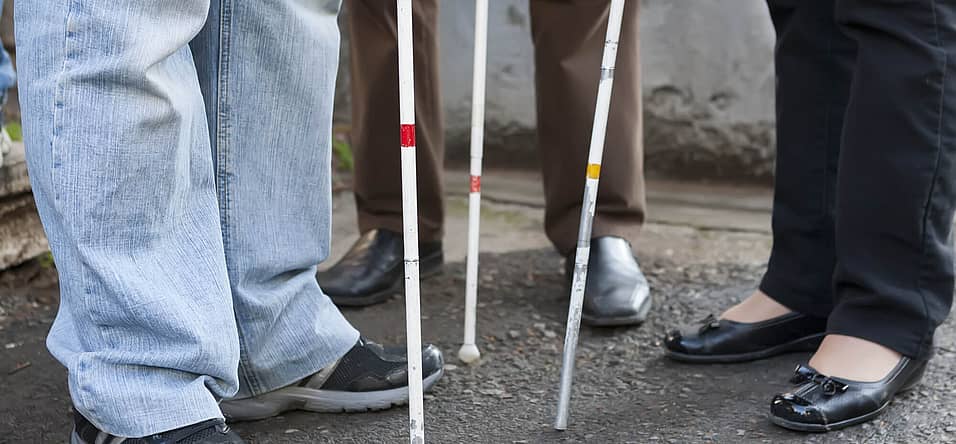
White Cane Safety Day
The blind and near-blind use a long white cane to feel objects, and to signal to others that they are visually impaired. Help raise safety awareness for them.
The white cane is a mobility tool that gives independence by making it possible for blind and visually impaired people to safely move around on their own. In addition to allowing people with vision impairments to move around safely, a white cane (sometimes with a red tip or marking) is an indication for those nearby that the person may need some extra space and appropriate care.
White Cane Safety Day is here to raise awareness for the presence of white canes, what they mean and how people can learn more and be helpful in relation to vision impairment.
History of White Cane Safety Day
The white cane got its start as a symbol for vision impairment in the decades between the two world wars. Beginning in Europe, the indicator of the long white cane then spread to North America and other places as well. Today, the National Federation of the Blind supplies a long white cane free of charge to everyone in the USA with low vision or blindness to help them navigate and also act as a safety indication to others.
Not every special day of the year has approval from the US president, but one important day that does is White Cane Safety Day. This day was first proclaimed in 1964 by President Lyndon B. Johnson. White Cane Safety Day was established with the intention of making everyone aware of the significance of a white cane and to encourage people, especially motorists, to take extra care when they see someone with a white cane.
It has also become a day on which the achievements of the blind and visually impaired are celebrated and offers the chance to educate and raise awareness of the blind and visually impaired.
How to Celebrate White Cane Safety Day
Looking for some interesting ways to celebrate and enjoy White Cane Safety Day? Get on board by enjoying the day with some of these ideas:
Join Some White Cane Day Events
Many communities host different events and activities in honor of White Cane Safety Day. Some will arrange for walks or marches to show support for those who are vision impaired or blind. In some cases, blindfolds and canes are provided for those who are not vision impaired to be able to experience what it is like. These types of activities are meant to teach people compassion for the challenges that are faced by those who do not have full use of one of their senses.
Learn About Vision Impairment
A helpful way to show support for White Cane Safety Day might be to get a bit more educated about some different factors related to vision impairment and blindness. Access to the Centers for Disease Control (CDC) and other websites from charitable organizations for the blind can offer a variety of different educational resources for those who want to learn more.
Consider some of these important facts:
-
Over one million Americans over the age of 40 are currently legally blind.
-
Just because a person is legally blind does not mean that they are totally blind. In fact, 90% of people who are legally blind do actually retain some small amount of vision.
-
Only around 2-8% of people who are visually impaired actually use a white cane. Instead, they either rely on their own remaining vision, a guide dog or a sighted guide.
-
Cataracts, often experienced in old age, are one of the most common but preventable forms of blindness.
Get Educated on White Cane Laws
White cane laws may change slightly based on each state, but the American Council for the Blind provides an online guide for each state. This guide can help citizens to understand what is required of them in relation to those who are carrying a white cane, particularly as it relates to those who are driving. Check out the online guide for more information.









